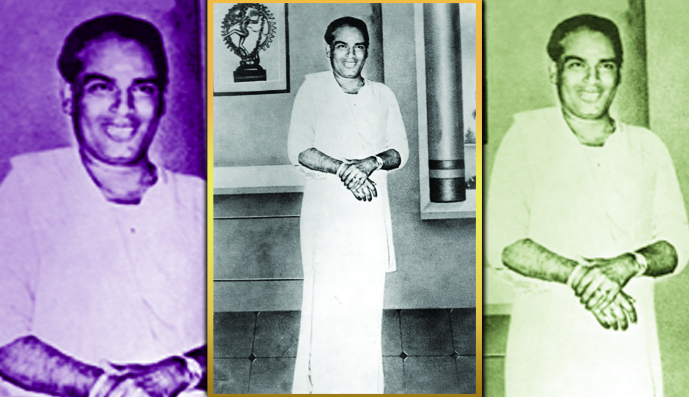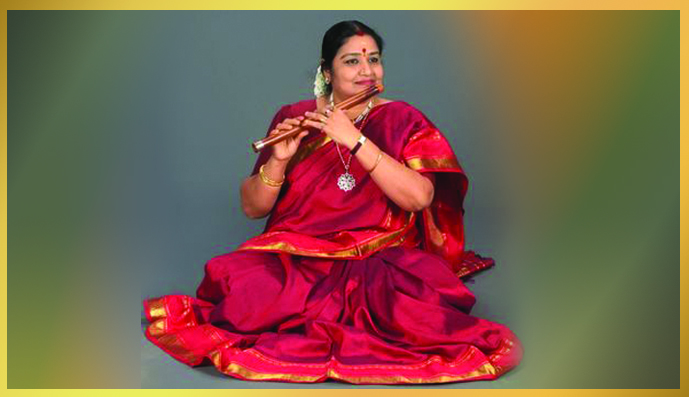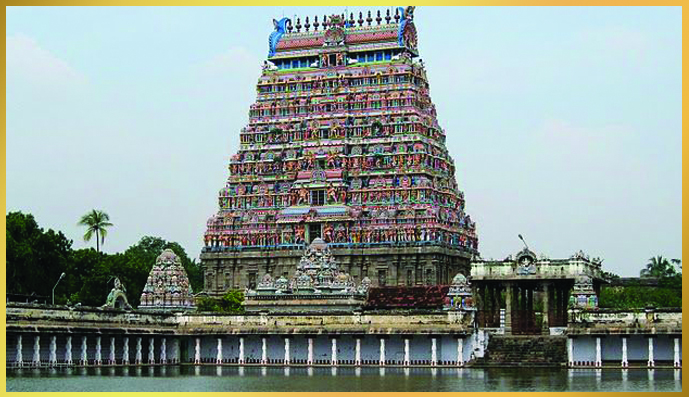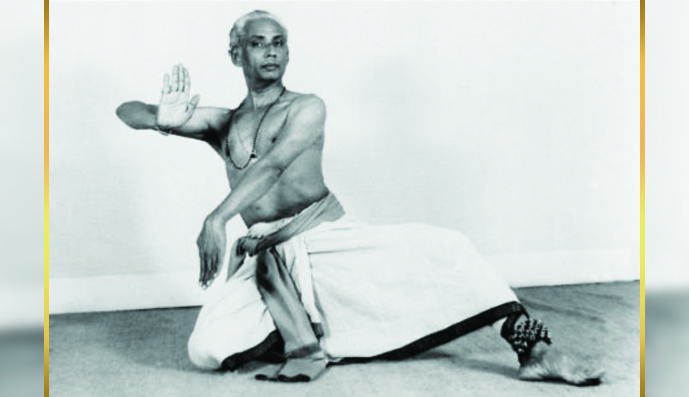Great are those nattuvanars, who spent all their lives enriching the Bharatanatyam repertoire with their innumerable compositions and choreographies. Such masters need to be celebrated. 14 July 2021 is a day to be etched in gold in the annals of the history of Bharatanatyam as it marked the centenary of an illustrious natyacharya, a Padma awardee, Kalaimamani K.N. Dandayudhapani Pillai. It was an occasion to be remembered by the entire Bharatanatyam fraternity. The veteran Bharatanatyam guru was an artist of many dimensions—an excellent ‘uttama vaggeyakara’, musician, choreographer, laya expert, natya exponent and more. His was a unique scholarship that can be placed on par with that of the outstanding Tanjavur Quartet whose Bharatanatyam repertoire has stood the test of time.
Flautist in the making Sikkil Mala, the daughter of Sikkil Neela, is the torchbearer of the bani of the famed flautist duo – the Sikkil Sisters, Sangita Kalanidhis Kunjumani and Neela. Mala’s journey with the flute, did not begin purposefully as the heir apparent of the flute lineage of her family, but in a very casual manner. Since there was so much music and flute being played around her, she naturally gravitated towards it and her mother taught her further. Mala, by her own admission, was quite a playful child, interested in a lot of handwork, painting and drawing. Her progress in music was gradual but little. She recalls with a chuckle that she would listen to her mother and aunt’s concerts, eagerly waiting for them to play the mangalam, so that she could then go and hug her mother and be with her!
I would believe only in a God, who could dance,” observed Fredreich Wilhelm Nietze. Dance is a manifestation of supreme joy. Generally, when one’s demand or need gets fulfilled, the ensuing joy kindles the statement, “I want to dance now!” If ordinary joys and fulfillment can instill such an ambience, what to say of ‘supreme joy and bliss’! Every religion and culture of the world has one or more dancing deities. The Greek Olympian Apollo is often called the ‘Dancer’—the god of archery, music, dance, truth and prophecy. Zeus, the Master God of Greek mythology, dances frequently. One of the muses—Terpsichore is a ‘goddess of dance and chorus’—her very name indicates that she delights in dancing.
Kuchipudi has a great tradition as an art form. Its origins date back to Siddhendra Yogi who lived in the 17th century and it is one of the oldest dance forms. With questions about the status of Kuchipudi in the dance scene vis-à-vis other dance forms, and the desire to break free from the shackles of outdated ideas and beliefs, a young Vempati Chinna Satyam left Kuchipudi (a town in Andhra Pradesh) for Madras (today’s Chennai) with just two rupees in his pocket. Satyam belonged to the traditional family of Kuchipudi dancers. Young Satyam was a proud heir to the art form, but he was not satisfied with what he had learnt and what he had inherited.
CONTENTS
6 News & notes
12 Birthday calendar
14 K.N. Dandayudhapani Pillai v A
Centenary Tribute
28 Sikkil Mala Chandrasekhar
34 Heritage sthalams v Pancha
sabhas - Kanaka sabha
39 A peep into the past v
Musical bonding
40 Organisation v Kuchipudi
Art Academy
44 Perspectives v The
javali—its prosody and origin
46 From the Editor
Front
Cover: K.N. Dandayudhapani Pillai
(photo courtesy: S. Srinivasan)
Sikkil Mala Chandrasekhar (photo: C.R. Ravi)
No.
444






